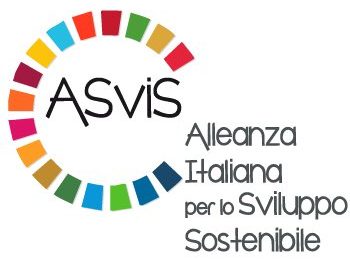The notion of reflexive governance is widely proposed to tackle the challenges of the infrastructure sector in terms of design and implementation of resilient infrastructures capable to respond to climate change and vulnerability. While the traditional policy approach involves a long-range, wide-scale and highly interventionist public planning, the latest approach shifts towards a so-called reflexive governance of infrastructure.
Reflexive Governance for Transition Management
Infrastructure sector has recently identified its own governance as a major challenge, that is the capacity to shape and transform itself (Voss and Borneman 2011). Reflexive governance becomes concerned with its own conditions, perspectives, expectations, knowledge, strategies and dynamics, in order to avoid the assumption of “full knowledge in advance” (Voss and Borneman 2011; Meadowcroft 1999). Reflexive governance implies the acknowledgment of participation, deliberation, probing and collective learning as key elements for inducing and navigating complex processes of socio-technical change (Voß, Smith, and Grin 2009). According to Ostrom (2010), dynamic and polycentric governance may lead to more effective and sustainable outcomes, and may reduce some problems related to the provision of collective goods (Goldthau 2014).
The consequent model of transition management (TM) represents a suitable approach in the adoption of innovation for structural transformations within complex socio-technical systems such as energy, natural resources and waste, agriculture, transport and housing (Kemp et al. 2007). According to Kemp et al. (2006) TM aims at “influencing the direction and speed of transitions by coordinating and enabling the processes that occur at different levels in a more systemic and evolutionary way”. Romans et al. (2007) defines TM in a perspective of incrementalism planning by adopting long-term system thinking, back-casting and forecasting. The objectives of TM are indeed the achievement of desirable social goals, the avoidance of serious pitfalls and institutional reforms to cope with unfolding patterns of change (Meadowcroft 2009).

Source: cphpost.dk
Transition Management in the Energy Sectors
Several transitions are expected to occur in the energy sectors: i) from a fossil fuel based carbon emitting system to a renewable carbon neutral system; ii) from a centralized energy provision to a decentralized system; iii) from a vulnerable to a resilient energy system. The major hindering factor in achieving the expected transition in energy sector refers to a socio-technical problem, that is the so-called ‘lock-in’ effect, with society locked in a sub-optimal equilibria, i.e. complex inherited systems that prevent structural change. Incrementally improved systems might actually be an optimal answer to certain types of vulnerability (Goldthau 2014), however it appears to be a critical obstacle in the current energy transition. Examples are multiple:
- Old power plants still operate profitably recovering exclusively their operational costs and are often exempted from recent strict environmental regulation.
- The integration of renewables energy production requires large investments in improving network inter-connectivity.
- Long lasting regulatory setting and political choices become solidified arrangements. For example, cost-ineffective fossil fuels subsidies are adopted because of their underlying information asymmetry, i.e costs are not observable, but benefits are well (unequally) redistributed across all income groups.

Source: left.it
Governance of the EU Energy Union
At EU level, governance of energy infrastructures already reports a certain degree of polycentrism and reflexivity. The development of integrated energy markets is just an example. In this sense, complex coordination among European, national and sub-national jurisdiction and authorities is required. The EU has published a “Regulation on the governance of the Energy Union” (2016), containing several objectives, which are in line with the idea of reflexive governance. The documents contains instructions to ensure that national legislation and policies are in line with EU objectives, but allowing for flexibility and adaption to local circumstances and needs. The reduction of administrative burdens is a core issue, recalling the principle of ‘better regulation’. Finally, the EU requires the development of national energy plans for the period 2021-2030, enhancing the importance of accounting for regional and local cooperation among local authorities, citizens and businesses.
The principle of ‘better regulation’ is considered a tool to achieve transparency, evidence-based policymaking and law making, and citizens’ and stakeholders’ participation. It involves concrete actions such as extensive planning and impact assessment, improved stakeholders’ consultation and legislative simplification for fit-for-purpose EU law.
These guidelines are re-affirmed in the EU Commission Task Force on “Subsidiarity, Proportionality and ‘Doing Less More Efficiently'” (November 2017) in order to minimize intervention and transaction costs, while increasing cost-effectiveness of EU policymaking.
The EU and national public procurement legislation provide examples of concrete implementation of these guidelines. In line with the principles of subsidiarity and proportionality, Directive 2014/23/EU on the award of concession contracts allows Member States to choose the appropriate procurement procedure because of the complexity of such operations and because of the heterogeneous local circumstances. At national level, in order to achieve a legislative simplification for fit-for-purpose national law, the Italian national decree ‘Sblocca Italia’ (n. 133/2014) simplified the procedure for the awarding of concession contracts (unique contract for exploration and extraction) and introduced central decision making on the subject.
References
Goldthau, Andreas. 2014. “Rethinking the Governance of Energy Infrastructure: Scale, Decentralization and Polycentrism.” Energy Research and Social Science.
Kemp, René, and Jan Rotmans. 2009. “Transitioning Policy: Co-Production of a New Strategic Framework for Energy Innovation Policy in the Netherlands.” Policy Sciences.
Kemp and Loorbach. 2006. “Transition Management: A Reflexive Governance Approach.” In Reflexive Governance for Sustainable Development., Edward Elgar, Cheltenham, UK.
Meadowcroft, J. 1999. “Planning for Sustainable Development: What Can We Learn from the Critics?” In Planning Sustainability, Routledge: London.
Meadowcroft, James. 2009. “What about the Politics? Sustainable Development, Transition Management, and Long Term Energy Transitions.” Policy Sciences.
Ostrom, Elinor. 2010. “Polycentric systems for coping with collective action and global environmental change”. Global Environmental Change.
Rotmans, J., D. Loorbach, and R. Kemp. 2007. Transition Management: Its Origin, Evolution and Critique. Berlin, Germany.
Voß Jan-Peter, and Basil Borneman. 2011. “The Politics of Reflexive Governance: Challenges for Designing Adaptive.”
Voß, Jan Peter, Adrian Smith, and John Grin. 2009. “Designing Long-Term Policy: Rethinking Transition Management.” Policy Sciences.








